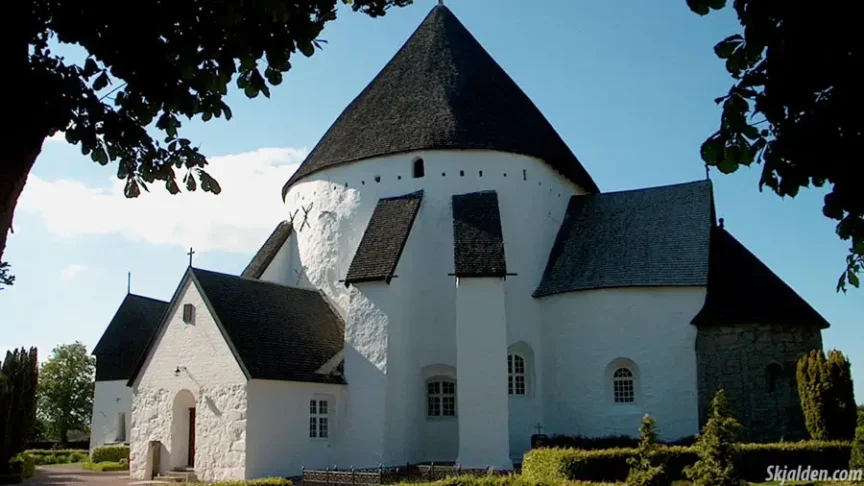Nestled atop a gentle hill in the charming village of Østerlars, stands the Østerlars Church (Danish: Østerlars Rundkirke) as a monumental piece of history and architecture. This remarkable church is not only the largest of Bornholm’s four round churches but also a symbol of the island’s rich past. The Østerlars Church, located approximately 500 meters north of the heart of Østerlars, has been a beacon of spirituality and community since its estimated construction around the year 1150.
The Østerlars Church’s unique round structure is more than just an architectural marvel; it’s a bridge to the past, echoing centuries of religious, cultural, and social evolution. Historically, the church has been a central part of the Østerlarsker Parish in the Bornholms Regionskommune. Its round design is not just for aesthetics; it also serves practical purposes, possibly as a defense mechanism against invaders from the sea.
Historical Significance of Østerlars Church
Over the years, Østerlars Church has undergone various transformations, each adding a layer to its rich history. The distinctive holes beneath the eaves were believed to support a parapet walk, indicative of its defensive role in the past. The wooden shingle roof, which was added around 1744, marked a shift in the church’s purpose from a defensive stronghold to a purely religious edifice.
The interior of the church is a testament to medieval artistry, adorned with frescoes on the central pillar. These paintings vividly depict scenes from the life and birth of Jesus Christ, along with the awe-inspiring representation of Judgment Day. A particularly striking feature is the depiction near the former women’s entrance, showcasing a procession of figures from various social standings being led toward the gates of hell.
In 1955, Østerlars Church underwent a significant restoration led by architect Rolf Graae. This restoration was a delicate balance between preserving its historical essence and adapting to contemporary needs. The altarpiece, a more recent addition painted by Poul Høm, complements the Renaissance-era altar, blending history with modern artistic expressions.
There are intriguing theories and legends surrounding Østerlars Church, including its connection with the Knights Templar. While these theories add a layer of mystery and allure to the church, they remain unproven, yet they contribute to the church’s enigmatic charm.
As Bornholm’s and Denmark’s largest round church, Østerlars has become a crucial part of the island’s cultural and historical identity. It is not just a place of worship but a symbol of the island’s resilience and adaptability through the ages. The church’s significance extends beyond its religious function; it is a cultural landmark, drawing around 120,000 visitors annually. This makes it one of Bornholm’s most visited attractions, showcasing the island’s rich heritage and architectural ingenuity.
The age of Østerlars Church is a subject of fascination. It is considered the oldest of Bornholm’s round churches, with its origins tracing back to around 1150. However, the exact timeline of its construction remains a topic of historical intrigue. The church, along with others on the island, served dual roles throughout history, acting both as a place of worship and as a defensive structure against maritime threats.
Photo credit: Micah MacAllen
